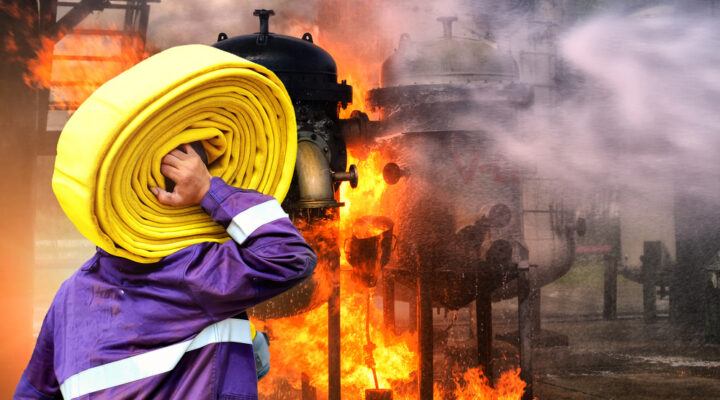Firefighters play a vital role in society. Each Firefighter represents a significant investment by a community. Therefore, there is significant study into how and why Firefighters are injured. Researchers use the term overexertion to describe mechanisms of injury.
This type of research is important for Firefighters. When a Firefighter is injured and the mechanism of injury is of a certain nature, there will be a certain reaction from Management and Risk Management. If Management and Risk Management is aware that a particular type of injury is common, it may be viewed with less scrutiny. Likewise, Firefighters claiming injury that are unique in nature may be subject to greater scrutiny.
This article will discuss overexertion, the results of a recent study and what Firefighter should be concerned about concerning the results of the study.
What Is Overexertion?
The Study noted that “according to the Occupational Safety and Health Administration (OSHA), the term “overexertion” is sometimes used synonymously or interchangeably with “bodily reaction” Strains can be defined as injury to the muscle or musculotendinous joint, and sprains are an injury to the ligament.” Firefighter Overexertion: A Continuing Problem Found in an Analysis of Non-Fatal Injury Among Career Firefighters Int. J. Environ. Res. Public Health 2020, 17(21), 7906; https://doi.org/10.3390/ijerph17217906 Published: 28 October 2020
Note: essentially, overexertion injuries are orthopedics injuries. For example, back injuries which are usually lumbar sprains/strains, or cervical sprains/strains. It can include injuries to both the upper and lower extremities such as shoulder sprains/strains and knee sprains/strains.
Why Is Overexertion Injuries Significant With Respect to Workers’ Compensation?
Per the Study, Overexertion.. is the leading cause of non-fatal injury across ten industry categories and accounts for 35% of non-fatal injuries and illnesses resulting in days away from work per year.” .” Firefighter Overexertion: A Continuing Problem Found in an Analysis of Non-Fatal Injury Among Career Firefighters Int. J. Environ. Res. Public Health 2020, 17(21), 7906; https://doi.org/10.3390/ijerph17217906 Published: 28 October 2020
Work Injuries can be costly to both private and government positions. The study noted that the “resultant sprain and strain injuries cost U.S. businesses and organizations an estimated USD 13.8 billion a year in direct costs, which include medical and lost-wage payments.” .” Firefighter Overexertion: A Continuing Problem Found in an Analysis of Non-Fatal Injury Among Career Firefighters Int. J. Environ. Res. Public Health 2020, 17(21), 7906; https://doi.org/10.3390/ijerph17217906 Published: 28 October 2020
Note: with respect to any industry, including Fire Departments, there is a need to contain risk management costs by having injury reduction.
What Did the Overexertion Study Tells Us About Firefighter Injuries?
The study found that despite the fact that the occupation deals with fire and its destructive properties to a human body, it is the overexertion which is the greatest source of injury to for firefighting personnel. .” Firefighter Overexertion: A Continuing Problem Found in an Analysis of Non-Fatal Injury Among Career Firefighters Int. J. Environ. Res. Public Health 2020, 17(21), 7906; https://doi.org/10.3390/ijerph17217906 Published: 28 October 2020
Note: with respect to this study, it important to note that the Departments appear to do an excellent job with respect to safety equipment to prevent fire and burn-related injuries. Thus, orthopedic injuries then emerge as the most common source of injury.
Another study provided additional data of interest. “Leading injury events were fires and explosions (36%) and overexertion and bodily reactions (20%). A majority (38%) of injuries occurred during firefighting activities, 7% occurred during training, and 7% occurred during patient care. Sprains and strains accounted for the largest proportion of injuries in all three of these activities: 28% firefighting activities, 32% training, and 36% patient care. Nonfatal Injuries to Firefighters Treating in U.S. Emergency Departments, 2003-2014, Suzanne M. Marsch, MPA, Melody Gwilliam MPH Srinivas Konda MPH Hope M.Tiesman PhD Rita Fahy Phd, American Journal of Preventative Medicine Volume 55, Issue 3, September 2018, P. 353-360.
Does Age Have an Impact with Respect to What Injuries Firefighters Have?
Yes. The study found that younger firefighters have different injuries than older firefighters. The study found that “FF personnel aged less than 39 experienced higher levels of injury as a result of fires and explosions, transportation incidents, and contact with objects and equipment, relative to those aged 40 and above. Those aged 40 and above experienced falls, slips and trips, as well as overexertion and bodily reactions at a higher prevalence than their younger counterparts.” .” Firefighter Overexertion: A Continuing Problem Found in an Analysis of Non-Fatal Injury Among Career Firefighters Int. J. Environ. Res. Public Health 2020, 17(21), 7906; https://doi.org/10.3390/ijerph17217906 Published: 28 October 2020
What will Department Do about This?
The study recommended a focus on fitness and ergonomics. Firefighter Overexertion: A Continuing Problem Found in an Analysis of Non-Fatal Injury Among Career Firefighters Int. J. Environ. Res. Public Health 2020, 17(21), 7906; https://doi.org/10.3390/ijerph17217906 Published: 28 October 2020.
Note: the challenges to this issue is that a significant amount of firefighting activity is performed in conditions in which ergonomics may not be able to be practiced. Thus, this is a significant challenge. Also, in the other study, overexertion injuries appear to be spread about evenly across the many task performed. Therefore, an overall approach may be taken by Departments as opposed to any particular job task.
What if I Need Advice?
If you would like a free consultation regarding workers’ compensation, please contact the Law Offices of Edward J. Singer, a Professional Law Corporation. We have been helping people in Central and Southern California deal with their workers’ compensation cases for 27 years. Contact us today for more information.

